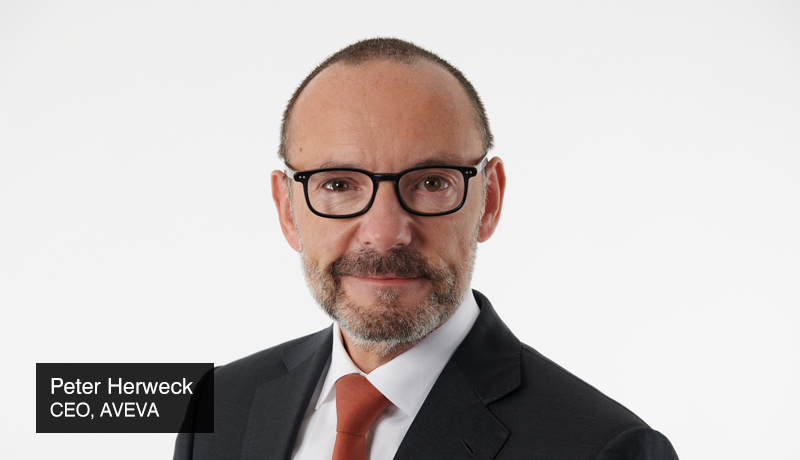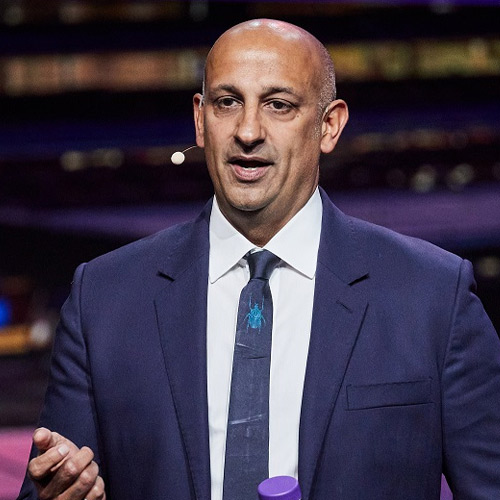
While announcing its product roadmap to industry leaders and partners at the AVEVA PI World conference in Amsterdam, AVEVA demonstrated how information – contextualized industrial data – is critical to sustainable growth across the energy, manufacturing, and infrastructure sectors.
“Information-led innovation provides a proven and responsive pathway to industrial growth at a critical time when the business landscape has been reshaped by turbulence and risk. Business leaders face increased sustainability compliance requirements, retiring workforces, and the ever-present demand for efficiency, agility and resilience. Raw data in itself is not immediately useful or even understandable but when you analyze and contextualize it into insightful information, that’s when you can help the industrial world to innovate at scale on the road to a net-zero future,” said AVEVA CEO Peter Herweck.
As the adoption of digital technologies has advanced and organizations aim to become more efficient, data is being created at exponential rates. According to a Statista study, about half of all existing industrial data as of June 2021 was created in the previous two years.
Amish Sabharwal, AVEVA Executive Vice President for Engineering, and Gregg Le Blanc, AVEVA Senior Vice President, Information Management, also spoke at AVEVA PI World about the company’s integrated portfolio and the product strategy for 2022 and beyond.
“Approximately 68% of currently available enterprise data goes unused because it sits in organizational silos, yet more data is being created than ever before. AVEVA software enables data to be aggregated, transformed and shared within companies and with external partners, unlocking innovation at scale for all players within a new and connected industrial economy,” Le Blanc said.
AVEVA Data Hub, a SaaS product that was launched earlier this year on AVEVA Connect, the industrial cloud platform, enables enterprises to unleash operational efficiency, boost sustainability, and accelerate digital transformation through data sharing capabilities.
Sabharwal explained how the digital twin helps industrial businesses implement sustainability.

“The digital twin recreates a physical asset in digital form by capturing, organizing and contextualizing data in a quantifiable form. When these models are used to forecast future scenarios, they can predict potential problems and improve asset reliability, reducing costs and resource use, and minimize carbon emissions. AVEVA’s digital twin is uniquely able to capture engineering, operations and maintenance data to provide a holistic, integrated view across multiple use cases,” Sabharwal said.
AVEVA recently updated their digital twin software with a number of new capabilities that enable visualizing asset data with real-time data faster and easier than ever before. AVEVA customers may now experience a complete digital twin in just 60 days with AVEVA Point Cloud Manager and AVEVA Asset Information Management, as well as revolutionary 3D wearable scanning and enhanced document management.
Over 1,500 attendees from all over the world attended the four-day event in person, with another 1,000 interacting online. They were given a rundown of recent advances with industry-leading technologies such as the AVEVA Connect industrial cloud platform and the AVEVA PI System operations information management. Learning labs gave students hands-on experience with cloud and data environments.
Customers and partners from more than 70 enterprises across 12 industry verticals discussed their data-driven digital transformation experiences during the event.
Jan Broekman, McDermott’s VP Global Engineering & Smart Modularization, discussed how digital solutions bring together the many various inputs required to construct sustainable capital projects, such as real-time commodities prices and low-carbon design across numerous locations.
Sergio Valencia, EDP Renewables’ ROPI Technical Services Manager, shared lessons learned from a Lighthouse Program initiative that transmitted two million data streams from distant wind farms to the cloud for consolidated insights.
Jacky Wright, Chief Digital Officer of Microsoft, talked about how data accelerates sustainability progress. “A cloud-based, data-driven approach enabled us to assess, select and build new technologies, and reduce our scope 1, scope 2, and, ultimately, scope 3 emissions across our business,” she said at the Digital Agility and Resilience Panel.
She explained how data analytics has supported smart buildings, investment into renewable energy to power data centers, and driven strategic decisions to pay for the removal of 1.3 million metric tons of carbon dioxide from the atmosphere.
Kellogg’s Global Director of Power, Controls, and Information System, Michael Dean, spoke on how the company’s platform investment has paid off in terms of scalability, consistency, standardization, and collaboration. Kellogg was able to harness, analyze, and manage energy data in its plants after implementing the AVEVA PI System, creating a digital ecosystem that benchmarked usage and highlighted cost-cutting potential. Kellogg saved $3.3 million in a single year, found an extra $1.8 million in rebates, and improved abatement measures as a result.
Dr Catherine Green, Associate Professor at the Wellcome Centre for Human Genetics at Oxford University, explained how advanced technologies help improve human lives. Despite lockdowns and remote working, she and her team were able to develop and bring to market the Oxford AstraZeneca vaccine in eight months as compared to eight years before the outbreak of Covid-19, thanks to improved data collection, advanced analytics and distributed trials and manufacturing. “The critical thing is 21st-century technology,” she said.
She added, “We really are at the transition point where you’re able to bring new tech to old problems. And data is going to change everything that we do here. It’s going to change our ability to analyze the problem, our ability to deliver the solution, and how we communicate with the healthcare sector and with the public.”